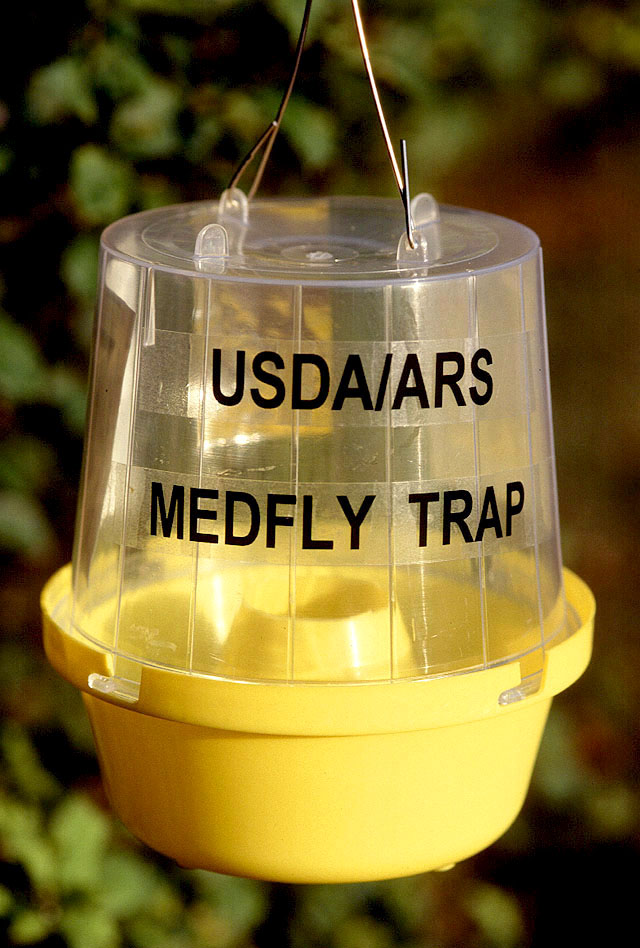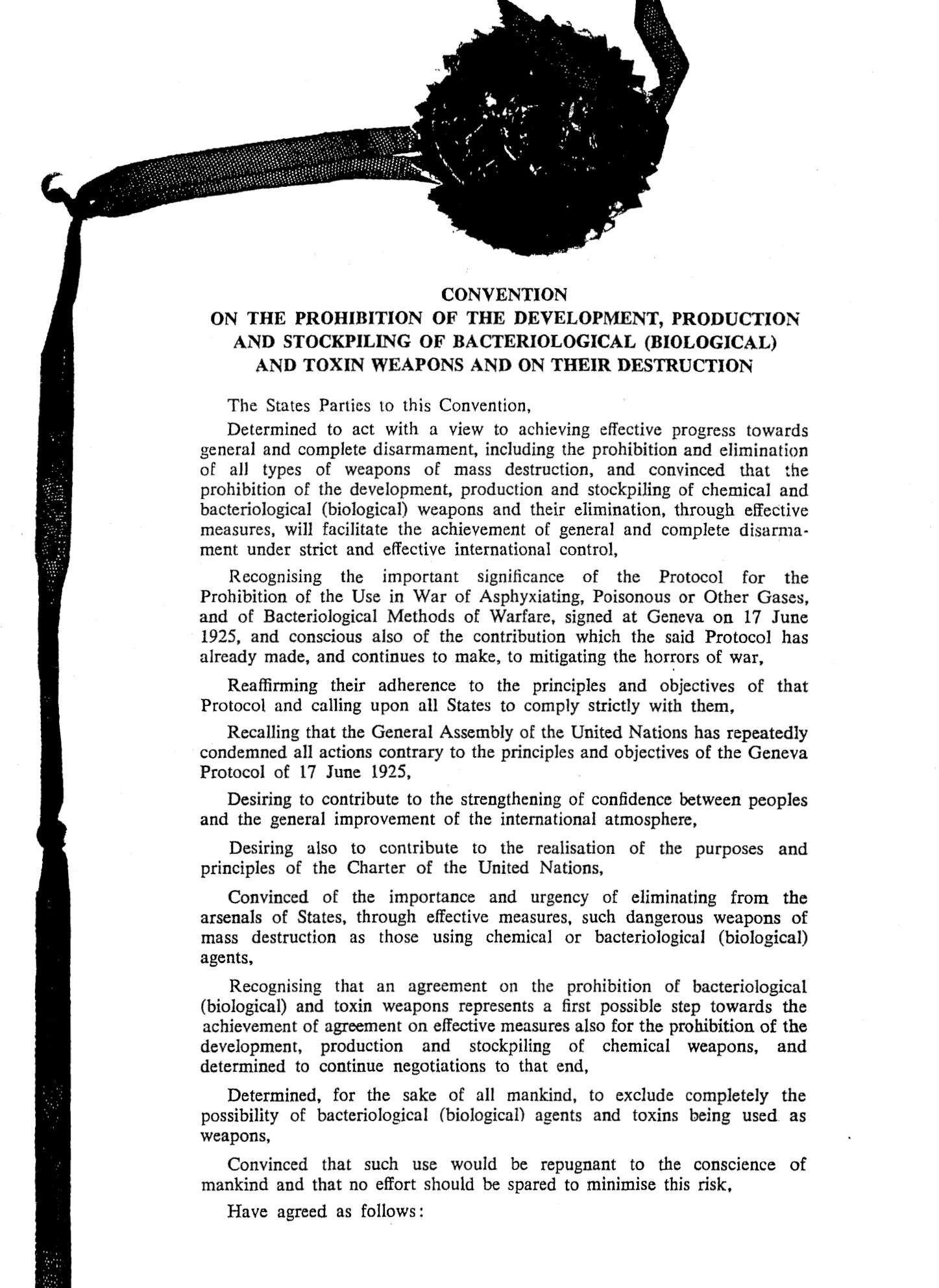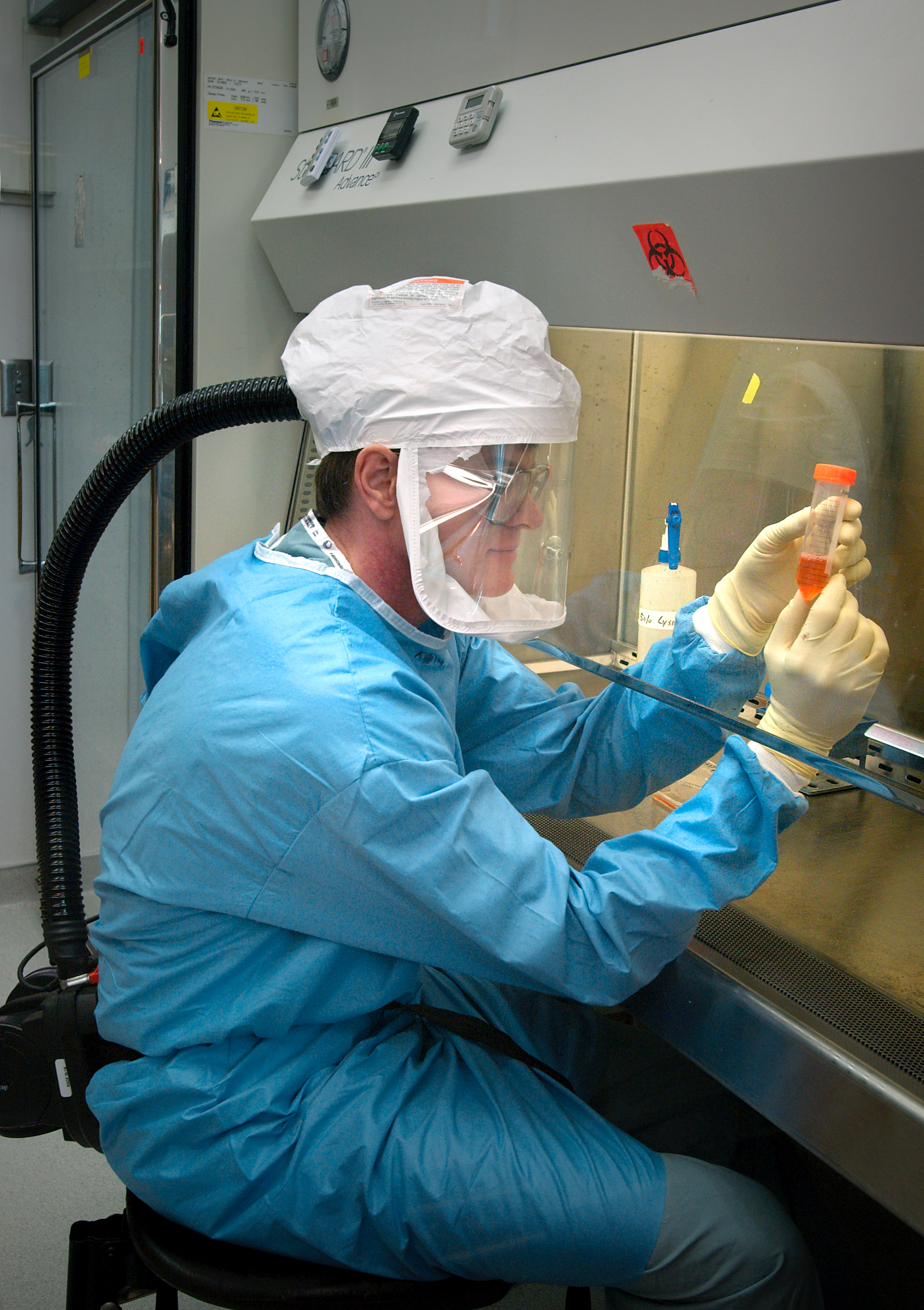|
Agro-terrorism
Agroterrorism, also known as agriterrorism and agricultural terrorism, is a malicious attempt to disrupt or destroy the agricultural industry and/or food supply system of a population through "the malicious use of plant or animal pathogens to cause devastating disease in the agricultural sectors"."Agriterrorism" Homeland Defense Stocks. It is closely related to the concepts of biological warfare, chemical warfare and entomological warfare, except carried out by non-state parties. A hostile attack, towards an agricultural environment, including infrastructures and processes, in order to significantly damage national or international political interests. Nomenclature The terms ''agroterrorism'', along with ''agroterror'' and ''agrosecurity'', were coined by veterinarian pathologist C ...[...More Info...] [...Related Items...] OR: [Wikipedia] [Google] [Baidu] |
1989 California Medfly Attack
In 1989, a sudden invasion of Mediterranean fruit flies (''Ceratitis capitata'', "medfly, medflies") appeared in California and began devastating crops. Scientists were puzzled and said that the sudden appearance of the insects "defies logic", and some speculated "biological terrorists" were responsible.Johnson, John.Invasion by Medfly Defies Logic, Scientists Say Infestation: Experts discover peculiar patterns in the spread of the stubborn fruit fly, ''Los Angeles Times'', December 30, 1989, accessed February 21, 2012. Analysis suggested that an outside hand played a role in the dense infestation.Howard, Russell D. et al. ''Homeland Security and Terrorism: Readings and Interpretations'',Google Books, McGraw-Hill Professional, 2006, p. 49, ().Pratt, Robert J.Invasive Species - A Threat to the Homeland?, USAWC Strategy Research Project, ''U.S. Army War College'', April 7, 2003, accessed February 21, 2012. A person or group calling itself "The Breeders" took responsibility for the ... [...More Info...] [...Related Items...] OR: [Wikipedia] [Google] [Baidu] |
Eco-terrorism
Eco-terrorism is an act of violence which is committed in support of environmental causes, against people or property. The United States Federal Bureau of Investigation (FBI) defines eco-terrorism as "...the use or threatened use of violence of a criminal nature against innocent victims or their property by an environmentally oriented, subnational group for environmental-political reasons, or aimed at an audience beyond the target, often of a symbolic nature." The FBI attributed eco-terrorists to US $200 million in property damage between 2003 and 2008. A majority of states in the US have introduced laws aimed at penalizing eco-terrorism. Eco-terrorism is a form of radical environmentalism that arose out of the same school of thought that brought about deep ecology, ecofeminism, social ecology, and bioregionalism.Long, Douglas. Ecoterrorism (Library in a Book). New York: Facts on File, 2004. Print. Page 19-22, 5, 5, 6, 6, 7, 154, 154, 48, 49-55. History The term ''ecoterro ... [...More Info...] [...Related Items...] OR: [Wikipedia] [Google] [Baidu] |
Agricultural Industry
Agriculture encompasses crop and livestock production, aquaculture, and forestry for food and non-food products. Agriculture was a key factor in the rise of sedentary human civilization, whereby farming of domesticated species created food surpluses that enabled people to live in the cities. While humans started gathering grains at least 105,000 years ago, nascent farmers only began planting them around 11,500 years ago. Sheep, goats, pigs, and cattle were domesticated around 10,000 years ago. Plants were independently cultivated in at least 11 regions of the world. In the 20th century, industrial agriculture based on large-scale monocultures came to dominate agricultural output. , small farms produce about one-third of the world's food, but large farms are prevalent. The largest 1% of farms in the world are greater than and operate more than 70% of the world's farmland. Nearly 40% of agricultural land is found on farms larger than . However, five of every six farms in t ... [...More Info...] [...Related Items...] OR: [Wikipedia] [Google] [Baidu] |
Biological Agent
Biological agents, also known as biological weapons or bioweapons, are pathogens used as weapons. In addition to these living or replicating pathogens, toxins and Toxin#Biotoxins, biotoxins are also included among the bio-agents. More than 1,200 different kinds of potentially weaponizable bio-agents have been described and studied to date. Some biological agents have the ability to adversely affect health, human health in a variety of ways, ranging from relatively mild allergy, allergic reactions to serious medical conditions, including serious injury, as well as serious or permanent disability or death. Many of these organisms are ubiquitous in the natural environment where they are found in water, soil, plants, or animals. Bio-agents may be amenable to "weaponization" to render them easier to deploy or disseminate. Genetic engineering, Genetic modification may enhance their incapacitating or lethal properties, or render them impervious to conventional treatments or preventive ... [...More Info...] [...Related Items...] OR: [Wikipedia] [Google] [Baidu] |
Incendiary Balloon
An incendiary balloon (or balloon bomb) is a balloon inflated with a lighter-than-air gas such as hot air, hydrogen, or helium, that has a bomb, incendiary device, or Molotov cocktail attached. The balloon is carried by the prevailing winds to the target area, where it falls or releases its payload. Historical use Early proposals In 1792, Joseph-Michel Montgolfier suggested using balloons for bombing British forces in Toulon.''Military Aircraft, Origins to 1918: An Illustrated History of Their Impact'' Justin D. Murphy, page 161 In 1807, Denmark tried to build a dirigible to bomb British ships blockading Copenhagen. [...More Info...] [...Related Items...] OR: [Wikipedia] [Google] [Baidu] |
Scorched Earth
A scorched-earth policy is a military strategy of destroying everything that allows an enemy military force to be able to fight a war, including the deprivation and destruction of water, food, humans, animals, plants and any kind of tools and infrastructure. Its use is possible by a retreating army to leave nothing of value worth taking, to weaken the attacking force or by an advancing army to fight against unconventional warfare. Scorched earth against non-combatants has been banned under the Additional Protocol II, 1977 Geneva Conventions. Origin of the term The term was found in English in a 1937 report on the Second Sino-Japanese War. The retreating Chinese forces burned crops and destroyed infrastructure, including cities, to sabotage the logistics of the advancing Japanese forces. Military theory Clausewitz wrote in ''Principles of War'': Clausewitz wrote in ''On War'': Historic examples Notable historic examples of successful scorched-earth tactics include the fai ... [...More Info...] [...Related Items...] OR: [Wikipedia] [Google] [Baidu] |
Food Security
Food security is the state of having reliable access to a sufficient quantity of affordable, healthy Human food, food. The availability of food for people of any class, gender, ethnicity, or religion is another element of food protection. Similarly, household food security is considered to exist when all the members of a family have consistent access to enough food for an active, healthy life. Food-secure individuals do not live in hunger or fear of starvation. Food security includes resilience to future disruptions of food supply. Such a disruption could occur due to various risk factors such as droughts and floods, shipping disruptions, fuel shortages, economic instability, and wars. Food insecurity is the opposite of food security: a state where there is only limited or uncertain availability of suitable food. The concept of food security has evolved over time. The four pillars of food security include availability, access, utilization, and stability. In addition, there are tw ... [...More Info...] [...Related Items...] OR: [Wikipedia] [Google] [Baidu] |
Bioterrorism
Bioterrorism is terrorism involving the intentional release or dissemination of biological agents. These agents include bacteria, viruses, insects, fungi, and/or their toxins, and may be in a naturally occurring or a human-modified form, in much the same way as in biological warfare. Further, modern agribusiness is vulnerable to anti-agricultural attacks by terrorists, and such attacks can seriously damage economy as well as consumer confidence. The latter destructive activity is called agrobioterrorism and is a subtype of agro-terrorism. Definition Bioterrorism agents are typically found in nature, but could be mutated or altered to increase their ability to cause disease, make them resistant to current medicines, or to increase their ability to be spread into the environment. Biological agents can be spread through the air, water, or in food. Biological agents are attractive to terrorists because they are extremely difficult to detect and do not cause illness for severa ... [...More Info...] [...Related Items...] OR: [Wikipedia] [Google] [Baidu] |
Biosecurity
Biosecurity refers to measures aimed at preventing the introduction or spread of harmful organisms (e.g. viruses, bacteria, plants, animals etc.) intentionally or unintentionally outside their native range or within new environments. In agriculture, these measures are aimed at protecting food crops and livestock from pest (organism), pests, invasive species, and other organisms not conducive to the welfare of the human population. The term includes Biological pest control, biological threats to people, including those from pandemic diseases and bioterrorism. The definition has sometimes been broadened to embrace other concepts, and it is used for different purposes in different contexts. The COVID-19 pandemic is a recent example of a threat for which biosecurity measures have been needed in all countries of the world. Background and terminology The term "biosecurity" has been defined differently by various disciplines. The term was first used by the agricultural and environmenta ... [...More Info...] [...Related Items...] OR: [Wikipedia] [Google] [Baidu] |
The Boston Globe
''The Boston Globe,'' also known locally as ''the Globe'', is an American daily newspaper founded and based in Boston, Massachusetts. The newspaper has won a total of 27 Pulitzer Prizes. ''The Boston Globe'' is the oldest and largest daily newspaper in Boston and tenth-largest newspaper by print circulation in the nation as of 2023. Founded in 1872, the paper was mainly controlled by Irish Catholic interests before being sold to Charles H. Taylor and his family. After being privately held until 1973, it was sold to ''The New York Times'' in 1993 for $1.1billion, making it one of the most expensive print purchases in United States history. The newspaper was purchased in 2013 by Boston Red Sox and Liverpool F.C. owner John W. Henry for $70million from The New York Times Company, having lost over 90% of its value in 20 years. The chief print rival of ''The Boston Globe'' is the '' Boston Herald'', whose circulation is smaller and is shrinking faster. The newspaper is "one ... [...More Info...] [...Related Items...] OR: [Wikipedia] [Google] [Baidu] |
Vector (epidemiology)
In epidemiology, a disease vector is any living agent that carries and transmits an infectious pathogen such as a parasite or microbe, to another living organism. Agents regarded as vectors are mostly blood-sucking (Hematophagy, hematophagous) arthropods such as mosquitoes. The first major discovery of a disease vector came from Ronald Ross in 1897, who discovered the malaria pathogen when he dissected the stomach tissue of a mosquito. Arthropods Arthropods form a major group of pathogen vectors with mosquitoes, Fly, flies, Sandfly, sand flies, lice, fleas, ticks, and mites transmitting a huge number of pathogens. Many such vectors are haematophagous, which feed on blood at some or all stages of their lives. When the insects and ticks feed on blood, the pathogen enters the blood stream of the host. This can happen in different ways. The ''Anopheles'' mosquito, a vector for malaria, filariasis, and various arthropod-borne-viruses (arboviruses), inserts its delicate mouthpart under ... [...More Info...] [...Related Items...] OR: [Wikipedia] [Google] [Baidu] |





